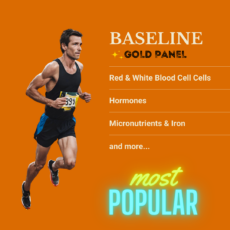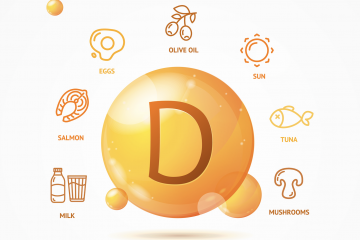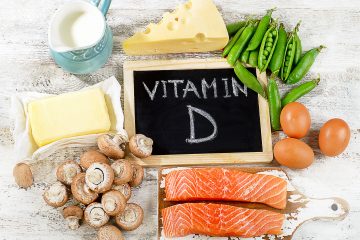Why should athletes care about ferritin levels even if they are not anemic?
My ferritin is low, but I’m not anemic.
There are many different kinds of anemia, but iron deficiency anemia is perhaps the most common. But among athletes, iron deficiency with no anemia (IDNA) is much more prevalent. This means ferritin levels are low but red blood cell production is still normal.
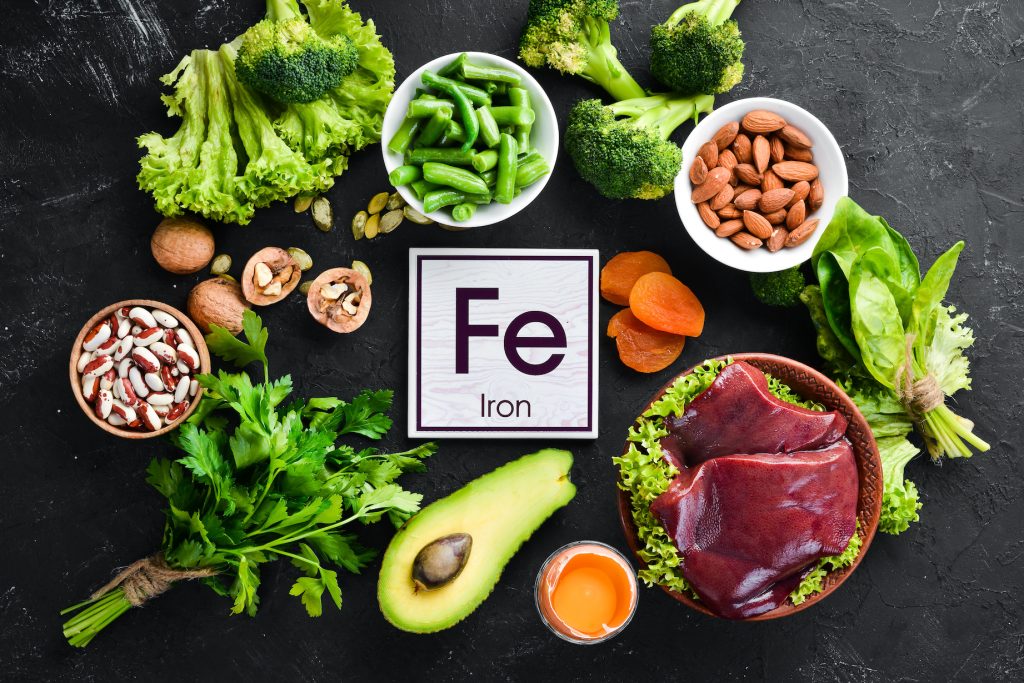
First, let’s define anemia, which in this context is simply not having enough red blood cells in your blood, which is measured by looking at hemoglobin levels. But even defining anemia can be tricky and differ based on factors such as age, sex, and pregnancy.
Classifying iron deficiency among athletes is not universal, but three stages of iron deficiency have been proposed if you dig into the literature. The stages take into account ferritin, hemoglobin, and transferrin (iron) saturation. Read more about the CBC for athletes here.
Many athletes have low or suboptimal ferritin levels, but hemoglobin and hematocrit levels are normal and even optimal. This is most consistent with stage 1 or 2 of iron deficiency. Red blood cell production is not decreased but athletic performance may still be compromised.
We’ve seen a lot of this scenario over the years at ABT.
Why? Researchers theorize that iron plays other vital roles in athletic performance besides just making red blood cells.
- Low ferritin for athletes may impair oxidative enzymes and respiratory proteins, reducing the ability to use oxygen efficiently. 1
- Inflammation plays a role. Inflammation caused by exercise may reduce iron absorption and the ability to mobilize iron to form new red blood cells. 1
- Other researchers think the low ferritin levels may impair aerobic adaptation from training. However, researchers are split on whether iron supplements taken by non-anemic athletes can improve aerobic performance. The more severe the iron deficiency the more benefit. But borderline cases may also benefit from a preventative measure. 1, 2, 3
- Low ferritin may reduce production at the mitochondrial level (remember ATP?). This may contribute to quicker localized muscle fatigue and quicker lactic acid build-up. 4
I found out my ferritin was low for athletes, so I started taking iron supplements. My levels improved a little bit, but I’m struggling to make further progress.
Sound familiar? We hear and see this issue all the time. So what can you do “get on top” of your iron levels?
First off, iron regulation in the body is complicated, and to complicate matters further, every athlete is different.
We typically start with basic tips that can help athletes maximize the amount of iron being absorbed from the supplements.
- Take iron with vitamin C – Most iron in a typical diet is considered non-heme (or from non-meat sources). Non-heme iron isn’t absorbed as well as heme-iron. Vitamin C to the rescue! It improves non-heme iron absorption! (5, 6)
- Take iron every other day instead of daily. Recommendations have changed over time and taking iron every day may reduce the amount your body can absorb. (7)
- Take your iron supplement separated by at least 2 hours from calcium, eggs, tea, coffee, zinc, or any food. All of which may hinder iron absorption. Take iron on an empty stomach. (8, 9, 10, 11, 12)
- Type of iron – there are many different types of iron and lots of discussion about which is best. The truth is, it depends on the athlete. Ferrous Sulfate supplements are commonly used because they are inexpensive and have a high bioavailability. We often prefer iron bisglycinate, which may have fewer side effects and can be taken in a lower dose with similar efficacy.
The response we often get goes something like this:
“but I’ve already heard all that and utilize best practices to try and optimize my iron intake. So what else can I do?”
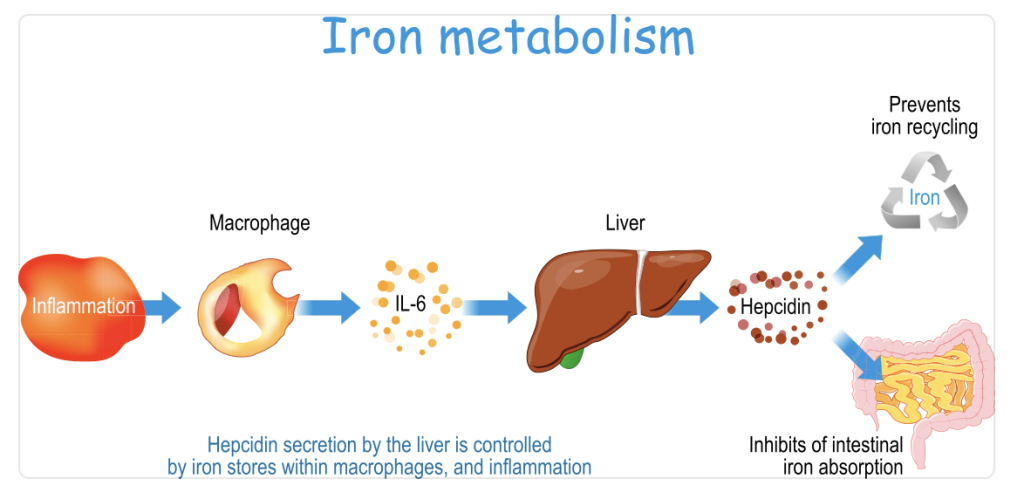
You may have heard of hepcidin, known as the “Master Iron Regulator.” Essentially, when hepcidin levels increase, iron absorption decreases, especially non-heme iron. Hepcidin levels may increase post-exercise, with peak levels between 3 and 6 hours. So another tip is to avoid taking iron during that window of time. (13)
But this is where it gets tricky and why some athletes are stuck with ferritin between 20 and 35 without improvement. When you are truly iron deficient, your body responds by producing less hepcidin, so the spike after exercise is reduced, allowing for more iron to absorb. But when the iron is not clinically deficient but ferritin for athletes below 35, your body may not recognize the need to minimize hepcidin. So hepcidin levels remain normal, and the supplements are not as effective. The athlete is stuck. A possible solution, as suggested by the authors of a recent paper titled “Iron considerations for the athlete: a narrative review,” is to rapidly restore iron via infusion to overcome the effects of hepcidin on absorption.
You can also try to run on softer surfaces such as a trail or track rather than concrete or pavement. This reduces footstrike hemolysis, which is a fancy way of saying breaking open red blood cells from the impact. With less footstrike hemolysis, you lose less iron from workouts.
Another method to help improve iron levels is to use a cast iron pan when cooking. If you don’t own any cast iron, you can buy small medallions to put in your pots/pans which can safely help increase the iron content of your food.
Additional Readings:
This is one of those random articles on the internet, but it’s actually pretty great, very detailed about the analysis of iron and available products on the market: Check it out. https://medium.com/@learngirl/iron-supplements-explained-61c1ce570313
Another good read: http://www.runningwritings.com/2017/04/low-ferritin-and-iron-deficiency-anemia.html
Find out what your ferritin levels are with a blood test.
-
 Gold Panel$429.00
Gold Panel$429.00
